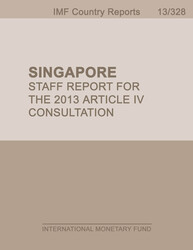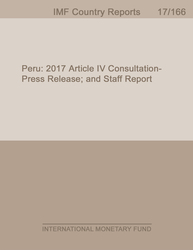
Singapore: Staff Report for the 2013 Article IV Consultation
ISCR/13/328
KEY ISSUESContext. Growth recovered and inflation declined sharply in 2013. Leverage has risen,with real estate a major beneficiary, but providing only a muted growth impulse.Intensive use of macroprudential measures recently stabilized house prices, which hadgrown rapidly. The financial sector has so far absorbed expectations of tapering by theFederal Reserve with limited volatility. Measures to encourage productivity growthcontinue to be rolled out, including through further tightening of foreign workerpolicies, which has pushed up wages.Outlook, risks and macroeconomic policies. Growth is likely to reach 3½ percentin 2013-14, supported by stronger G3 demand, despite softening in the region. Apositive output gap and rising labor costs will raise core inflation, but headline inflationwill stabilize on smaller asset price increases. External and domestic factors tilt thebalance of growth risks to the downside. Cyclical conditions warrant a restrictive stanceoverall. The current policy of modest gradual appreciation is consistent with limiting theoutput gap and anchoring inflation expectations, while continued targeting ofmacroprudential policies will help contain asset prices and ensure prudent lending. Thebudgeted fiscal stimulus is warranted to support the goal of raising productivity torelieve future supply constraints.Financial sector issues. Significant risks have built up under very low interest rates, butappear manageable, although confirmation will come only once the cycle has turned.Regional and global interconnectedness also brings risks. A countercyclical capital buffer,stepped-up onsite bank inspections, strengthened fx liquidity management practices bybanks, and vigorous enforcement of international AML/CFT commitments are advised.Higher leverage increases aggregate sensitivity to macroeconomic shocks and interestrate cycles, exacerbated by significant balance sheet heterogeneity.Demographic shifts. Prospective population aging and workforce shrinkage call forcontinuing to boost labor productivity, aided by the higher education levels of youngercohorts and continuing to tap foreign workers—though at a slower pace than previously.Recent commitments to strengthen social safety nets in a targeted manner, especially forthe elderly, are welcome.External sector assessment. From a multilateral perspective and taking into accountSingapore's unique characteristics, the external position is stronger than warranted byfundamentals. Increased public spending and a tighter labor market caused by a slowerpace of foreign worker inflows—consistent with the authorities' plans—and appropriateadjustments in other countries should narrow the large current account surplus.
Publication date: November 2013
ISBN: 9781475521054
$18.00
Add to Cart by clicking price of the language and format you'd like to purchase
Available Languages and Formats
| English |
Prices in red indicate formats that are not yet available but are forthcoming.
Topics covered in this book
This title contains information about the following subjects.
Click on a subject if you would like to see other titles with the same subjects.
Also of interest
Summary
Copyright © 2010 - 2024
Powered by:
AIDC



